Imagine bringing the beauty and tranquility of the outdoors into your home with indoor trees that thrive even in low light conditions. Transform your living space into an indoor tropical paradise without worrying about the lack of sunshine.
In this blog post, we’ll explore eight spectacular low light indoor trees that will not just add a stylish touch to your home, but are also easy to care for and maintain. Get ready to turn any room into a lush haven of greenery and vitality!
- Short Summary
- 1. Rubber Plant: A Versatile Choice
- 2. Lady Palm: An Elegant Addition
- 3. Corn Plant: A Striking Focal Point
- 4. Umbrella Tree: A Unique Shape
- 5. Kentia Palm: A Tropical Touch
- 6. Dragon Tree: A Bold Statement
- 7. Parlor Palm: A Classic Option
- 8. Money Tree: A Lucky Charm
- Summary
- Frequently Asked Questions

Short Summary
Bring vibrant beauty to your home with low light indoor trees: Rubber Plant, Lady Palm, Corn Plant, Umbrella Tree and Kentia Palm for sophistication, Dragon Tree for boldness, Parlor Palms for timeless elegance and Money Trees to bring luck!
With the right care & maintenance these plants can thrive in any space.
Add a touch of style & fortune to your home with these spectacular low light indoor trees!
1. Rubber Plant: A Versatile Choice

Meet the versatile Rubber Plant (Ficus elastica), a popular indoor tree that can tolerate low light conditions with ease. With its broad and glossy leaves, this lovely plant can grow up to an impressive 6 to 10 feet tall indoors, similar to a banana tree in height.
Its minimal maintenance requirements and ability to thrive in simple conditions make it an excellent choice for bringing a touch of nature indoors.
Varieties of Rubber Plants
Rubber Plants boast a delightful array of varieties, each with its own unique appearance. Their leaves come in vibrant shades of green, and some even have cheerful flecks of creams, yellows, and pinks. Some popular indoor varieties include the Fiddle Leaf Fig, Weeping Fig, and Areca Palm, each with its own set of care requirements.
The Fiddle Leaf Fig thrives in bright indirect light, while the Weeping Fig needs a combination of bright indirect sunlight and occasional bursts of direct light. On the other hand, the resilient Areca Palm can adapt to low light conditions, similar to a dwarf banana tree.
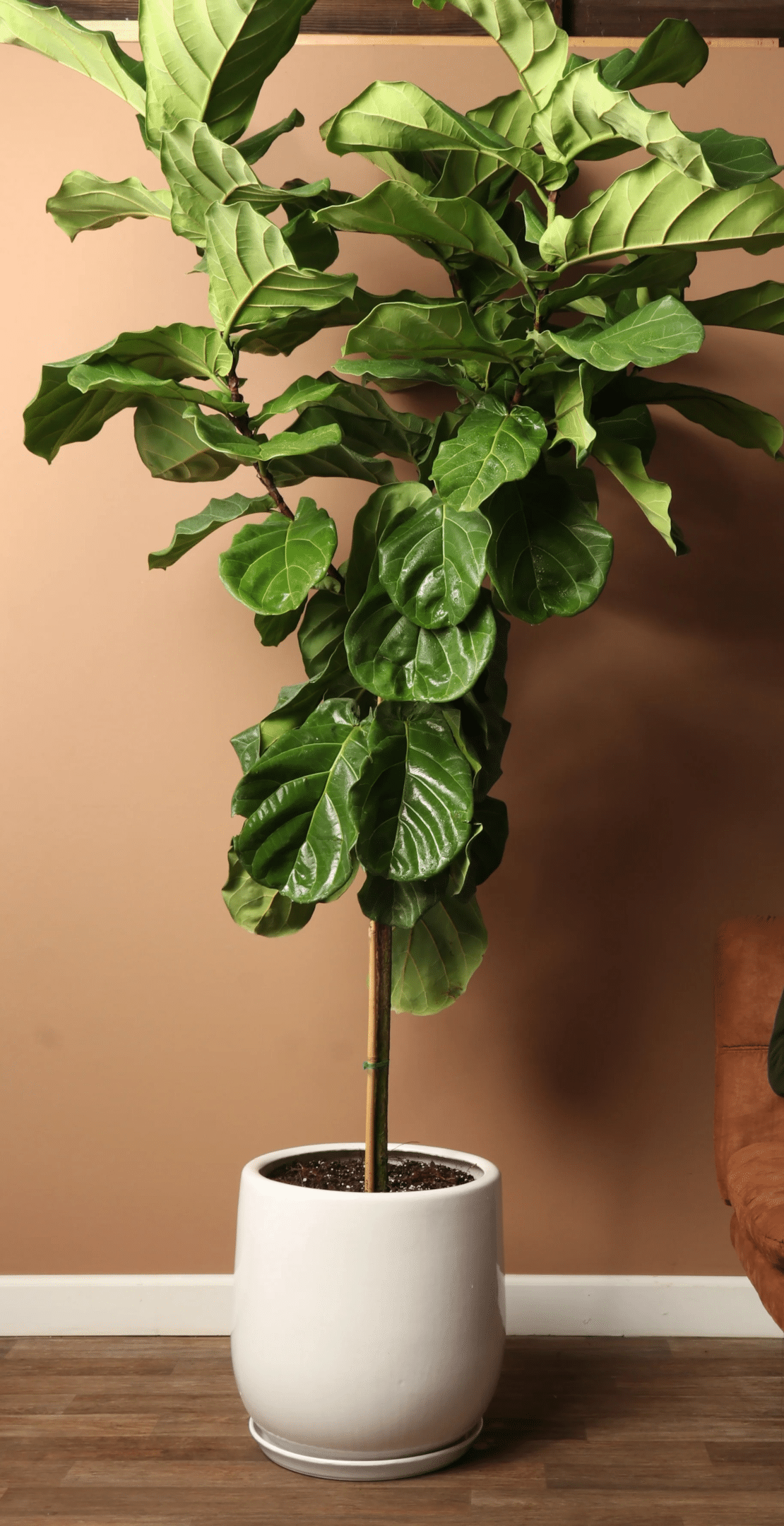
Caring for these different varieties of Rubber Plants involves rotating them every few weeks to ensure every inch of the plant gets some light. Additionally, wiping down their large leaves helps to keep them looking beautiful and dust-free. With proper care, your Rubber Plant will not only grow steadily, but also bring a sense of tranquility and elegance to your home.
Rubber Plant Care Tips
Caring for your Rubber Plant is simple and straightforward. It loves bright, indirect light and should be watered once a week to maintain healthy, moist soil. The ideal soil for a Rubber Plant is well-drained and well-aerated, ensuring the perfect balance of moisture and air circulation.
With proper care, your Rubber Plant will grow steadily and serve as a beautiful addition to your indoor space.
Potential Issues and Solutions
Although Rubber Plants are generally resistant to pests and diseases, it’s important to be mindful of potential issues such as overwatering, which can lead to root rot and yellowing or dropping leaves. By regularly watering and checking the soil for wetness or dryness, you can ensure that your Rubber Plant stays healthy and vibrant.
Additionally, keeping an eye out for pests and addressing them as needed will further contribute to the overall well-being of your plant.
2. Lady Palm: An Elegant Addition
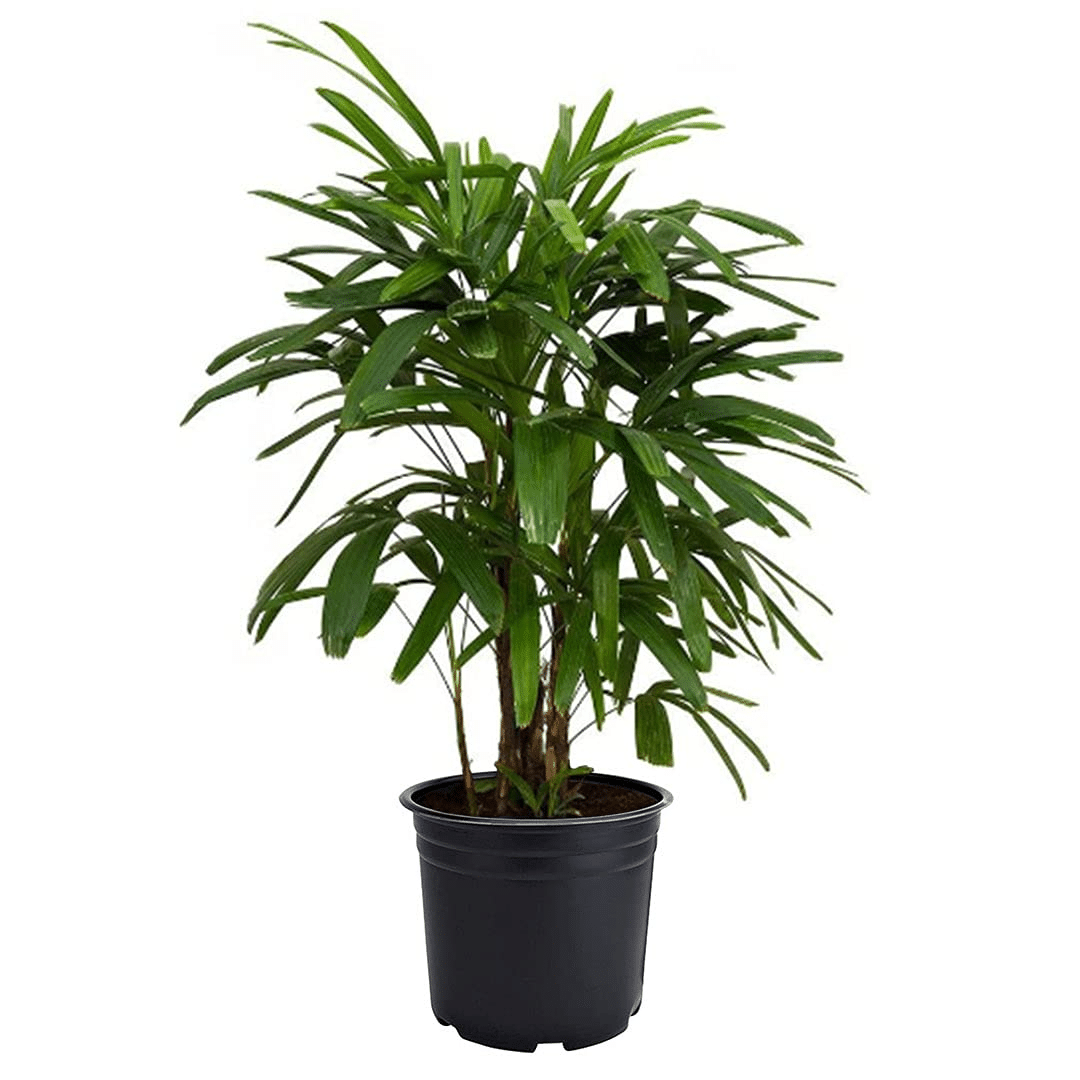
The exquisite Lady Palm (Rhapis Excelsa) is an elegant addition to any indoor space, bringing a touch of sophistication and grace. With its slender, fan-like leaves and lush greenery, the Lady Palm can grow up to 12 feet tall, adding a refined and stylish presence to any room.
It can tolerate low light conditions and can be an excellent choice for darker corners where other plants may struggle, even without the need for bright light.
Types of Lady Palms
Lady Palms come in an array of stunning varieties, each with its own unique characteristics. Some popular types include the Broadleaf Lady Palm, Slender Lady Palm, and Thai Lady Palm, all offering a touch of elegance to your home. These lovely plants are known for their adaptability, thriving in a range of lighting conditions from low light to bright indirect light.

Whether you’re looking to create an indoor tropical paradise or simply wish to add a touch of elegance to your living space, the Lady Palm is an excellent choice. Its lush green fronds and graceful structure make it a popular indoor tree that can complement any interior design style. Not only is it visually appealing, but it’s also a low-maintenance plant that can adapt to a variety of lighting conditions.
Caring for Your Lady Palm
Caring for your Lady Palm is a breeze. These beautiful plants thrive in bright, indirect light and require regular watering to maintain their health. Be sure to keep the soil moist but not soggy, allowing it to dry out slightly between waterings.
The Lady Palm doesn’t require much fertilization, but you can opt to feed it with a liquid houseplant fertilizer diluted to half-strength once a month for an abundance of growth. With proper care, your Lady Palm will flourish and become a stunning centerpiece in your home.
Common Problems and How to Solve Them
Although Lady Palms are generally hardy and resilient, it’s important to be aware of potential issues that may arise. Common problems include browning leaves, yellowing leaves, and root rot. To prevent browning leaves, limit the amount of direct sunlight your plant receives.
Yellowing leaves can be addressed by avoiding overwatering and ensuring proper drainage. Proper care and attention to these details will ensure that your Lady Palm remains a healthy and elegant addition to your indoor space.
3. Corn Plant: A Striking Focal Point
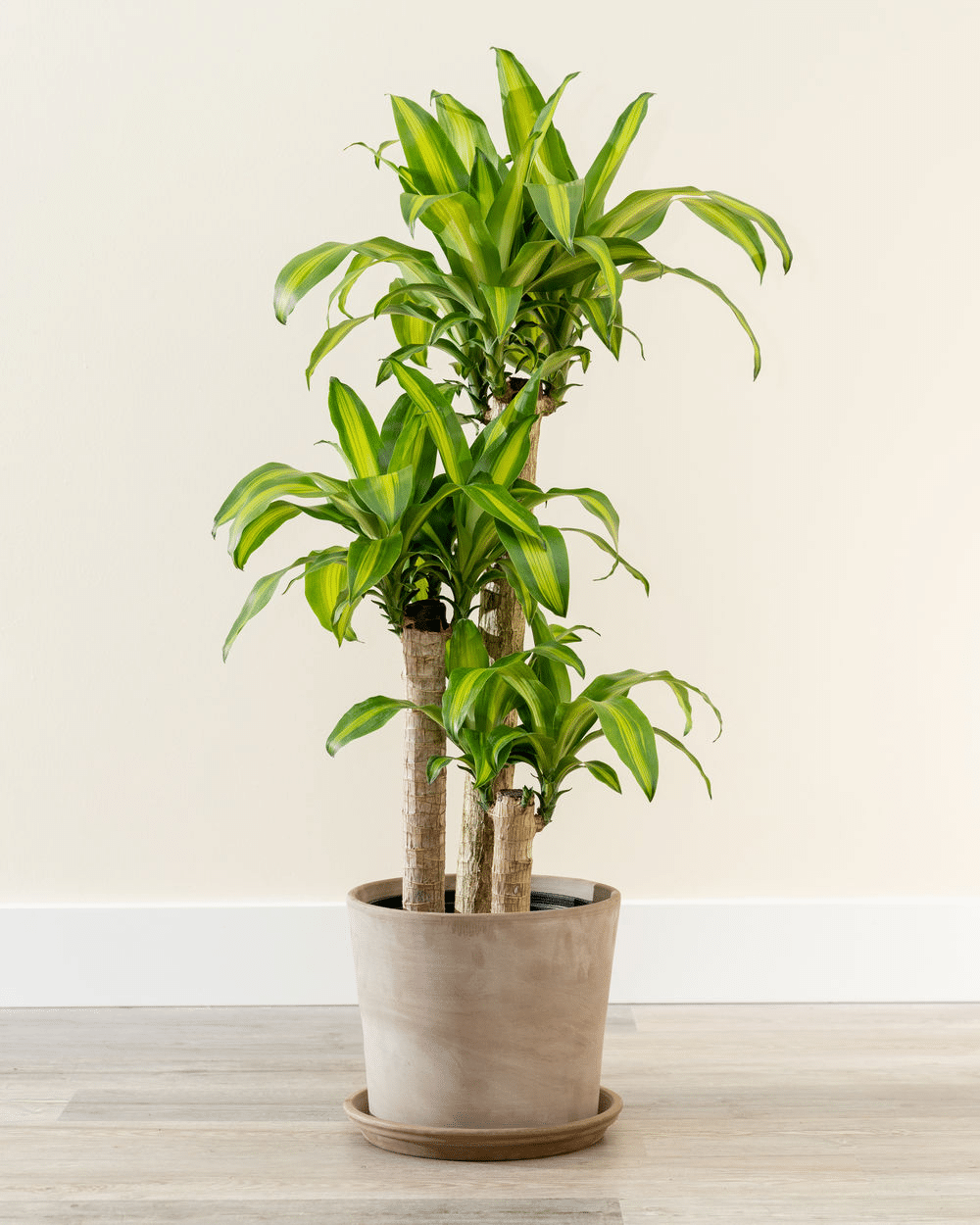
Introducing the Corn Plant (Dracaena), a striking indoor tree that can grow in low light conditions with its lush, slender leaves growing upward from strong stems. This impressive plant can reach up to 10 feet tall, making it a perfect focal point for any room in your home.
With its unique shape and bold presence, the Corn Plant is sure to catch the eye and become a conversation starter.
Different Corn Plant Varieties
Corn Plants come in a variety of stunning types, including dent corn, flint corn, pod corn, popcorn, flour corn, and sweet corn. Each variety has its own unique characteristics, offering a diverse range of options to suit your personal taste and style. Whether you’re looking for a plant with a more traditional appearance or one with a touch of modern flair, there’s a Corn Plant variety that’s perfect for you.
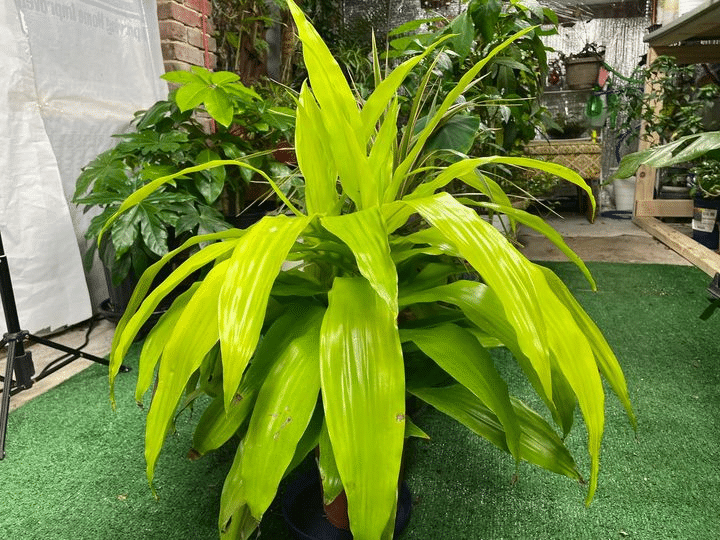
The Corn Plant is certainly noteworthy for its wide yellow stripe that can be found running down the middle of the leaves. This feature makes it a very distinctive plant. As the plant grows, it elegantly sheds its lower leaves, revealing a thick ridged stem that adds to its overall beauty. With its stunning appearance and ability to thrive in low light conditions, the Corn Plant is an excellent choice for bringing a touch of nature into your home.
Corn Plant Care Guide
Caring for your Corn Plant is simple, as it thrives in a variety of conditions. This adaptable plant loves bright, indirect light and should be watered once a week for optimal growth.
Make sure the soil is completely dry before watering, as overwatering can lead to root rot and other issues. With proper care and attention, your Corn Plant will grow steadily and become a beautiful focal point in your home.
Troubleshooting Common Issues
While corn plants are generally low maintenance, it’s important to be aware of potential issues and their solutions. Common problems include browning leaves, yellowing leaves, and root rot. To address these issues, adjust the amount of water and light your plant receives, as well as ensuring proper drainage in the soil.
By taking these steps, you can help your Corn Plant remain healthy and vibrant, making it a stunning addition to your indoor space.
4. Umbrella Tree: A Unique Shape

Discover the unique umbrella tree (Schefflera), an indoor tree known for its distinctive shape and ability to grow in low light conditions. With its long, arching branches topped with glossy, dark green leaves, the umbrella tree can reach up to 10 feet in height, making it a truly eye-catching addition to any room.
Its unusual shape and lush foliage create a captivating focal point, bringing a touch of the outdoors into your home.
Umbrella Tree Varieties
The Umbrella Tree boasts several enchanting varieties, including Dwarf Schefflera, Octopus Schefflera, Alpine Schefflera, Sunburst Schefflera, Madame De Smet Schefflera, and Australian Umbrella Tree. Each variety offers its unique charm and beauty, ensuring that there’s an umbrella tree to suit every taste and style.
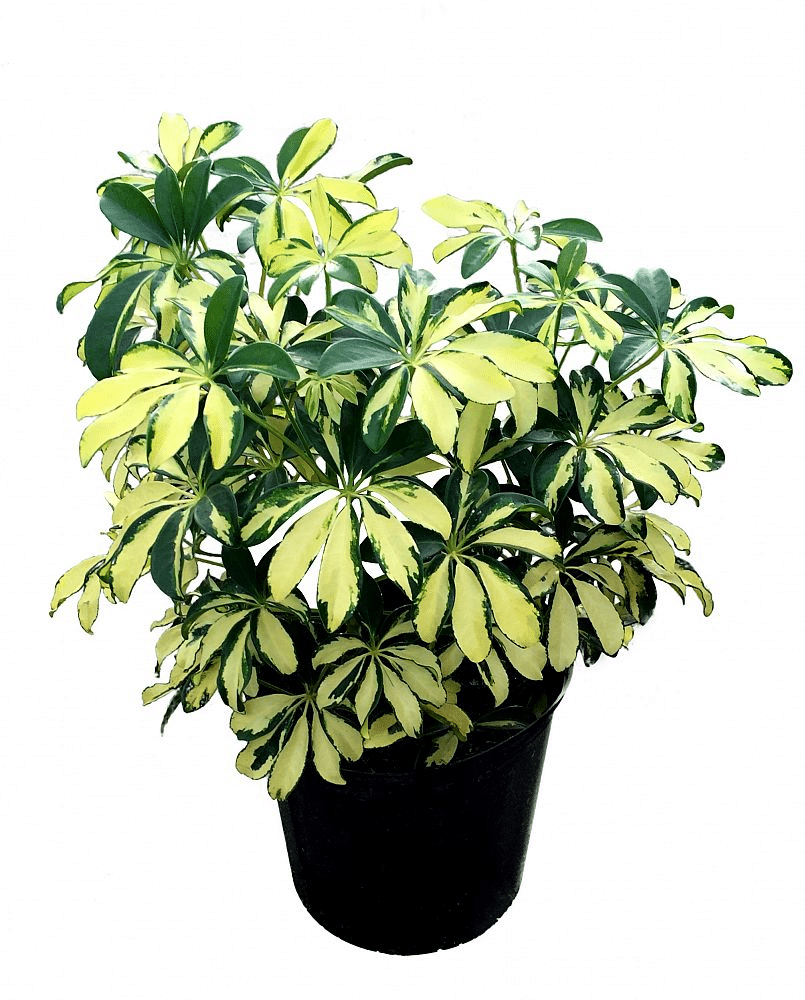
Dwarf Schefflera, for example, is a delightful, bushy tree with glossy, dark green leaves, growing slowly up to 4 feet in height. In contrast, the Octopus Schefflera is a tall, upright tree with long, arching branches topped with glossy, dark green leaves, reaching an impressive height of up to 10 feet.
Whatever your preference, there’s an umbrella tree variety that will add a captivating touch to your indoor space.
Proper Care for Umbrella Trees
Taking care of your umbrella Tree is a breeze. These low-maintenance plants require bright, indirect light and regular watering. Water your umbrella Tree when the top inch of soil is dry, and either mist it regularly or invest in a good humidifier to ensure the tree is getting the optimal amount of moisture.
Additionally, fertilize your umbrella. Tree once a month during its growing season with a regular houseplant fertilizer diluted to half-strength for a healthy and thriving plant.
Dealing with Common Problems
While umbrella. Trees are generally hardy and resilient, it’s important to be aware of potential issues and how to address them. Some common problems include overwatering, which can lead to root rot, and browning leaves due to too much direct sunlight.
To maintain a healthy umbrella tree, adjust your watering techniques, provide proper lighting conditions, and monitor your plant for any signs of pests or diseases. By doing so, you can ensure your umbrella tree remains a healthy and captivating addition to your home.
5. Kentia Palm: A Tropical Touch

Add a touch of the tropics to your home with the Kentia Palm, a tropical indoor tree that can thrive in low light conditions. Known for its graceful, arching fronds, the Kentia Palm can grow up to 12 feet tall, bringing a lush, tropical ambiance to any room.
This low-maintenance palm plant is perfect for those who want to introduce a slice of paradise into their indoor space without the need for constant care.
Choosing the Right Kentia Palm
The Kentia Palm is available in two stunning species: Howea forsteriana (Kentia Palm or Thatch Palm) and Howea belmoreana (Sentry Palm). Each species offers its unique charm and beauty, ensuring that there’s a Kentia Palm to suit your personal taste and style. Whether you prefer the elegant, arching fronds of the Kentia Palm or the stately, upright leaves of the Sentry Palm, these tropical beauties are sure to make a statement in your home.
Not only do Kentia Palms add a touch of the tropics to your home, but they also thrive in low light conditions, making them an excellent choice for darker corners or rooms without direct sunlight. With their lush foliage and graceful structure, Kentia Palms can transform any space into a relaxing, tropical retreat.
Kentia Palm Care Instructions
Caring for your Kentia Palm is relatively simple, as it requires minimal maintenance. These plants should be situated in an environment full of bright, indirect light. The soil should also be watered once the top inch has dried up. Fertilize your Kentia Palm every two weeks during the growing season with a regular houseplant fertilizer diluted to half-strength to ensure optimal growth.
By providing your Kentia Palm with the proper care, it will reward you with its stunning, tropical presence.
Addressing Common Kentia Palm Issues
While Kentia Palms are generally low maintenance and resilient, it’s important to be aware of potential issues and their solutions. Common problems include browning leaves due to overwatering, yellowing leaves from lack of light, and root rot from poor drainage.

To maintain a healthy Kentia Palm, adjust your watering techniques, provide proper lighting conditions, and ensure proper drainage in the soil. By taking these steps, you can keep your Kentia Palm healthy and vibrant, adding a touch of tropical charm to your home.
6. Dragon Tree: A Bold Statement
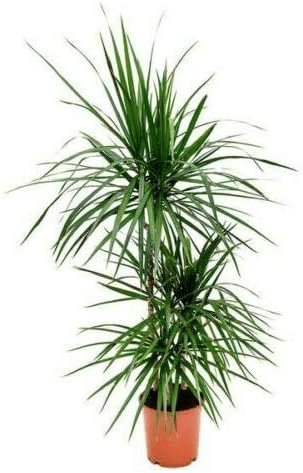
Make a bold statement in your home with the Dragon Tree, an indoor tree known for its spiky leaves and sturdy structure. This eye-catching plant can grow up to 10 feet tall, making it a perfect focal point for any room with indoor trees.
With its dramatic appearance and ability to grow in low light conditions, the Dragon Tree is a striking addition to your collection of light indoor trees.
Types of Dragon Trees
Dragon Trees come in a range of stunning varieties, each with its own unique characteristics. Some of the impressive types include Dracaena arborea, Dracaena warneckii, Dracaena marginata, Dracaena reflexa, Dracaena sanderiana, and Dracaena surculosa. Each variety offers its own distinct charm and beauty, ensuring that there’s a Dragon Tree to suit every taste and style.

One of the most striking features of Dragon Trees is their narrow, blade-like leaves, which are edged in vibrant red or purple, depending on the variety. These plants bring a sharpened texture and bold presence to any room, making them a popular choice for those looking to make a statement with their indoor plants.
Dragon Tree Care Guide
Taking care of your Dragon Tree is simple, as it thrives in a variety of conditions. This adaptable plant loves bright, indirect light and should be watered once a week for optimal growth.
Make sure the soil is completely dry before watering, as overwatering can lead to root rot and other issues. With proper care and attention, your Dragon Tree will grow steadily, adding a bold and dramatic touch to your indoor space.
Solutions for Common Dragon Tree Problems
While Dragon Trees are generally low maintenance, so it’s important to be aware of potential issues and their solutions. Common problems include overwatering, which can lead to root rot, and browning leaves due to too much direct sunlight.
To maintain a healthy dragon tree, adjust your watering techniques, provide proper lighting conditions, and monitor your plant for any signs of pests or diseases. By doing so, you can ensure your Dragon Tree remains a healthy and captivating addition to your home.
7. Parlor Palm: A Classic Option
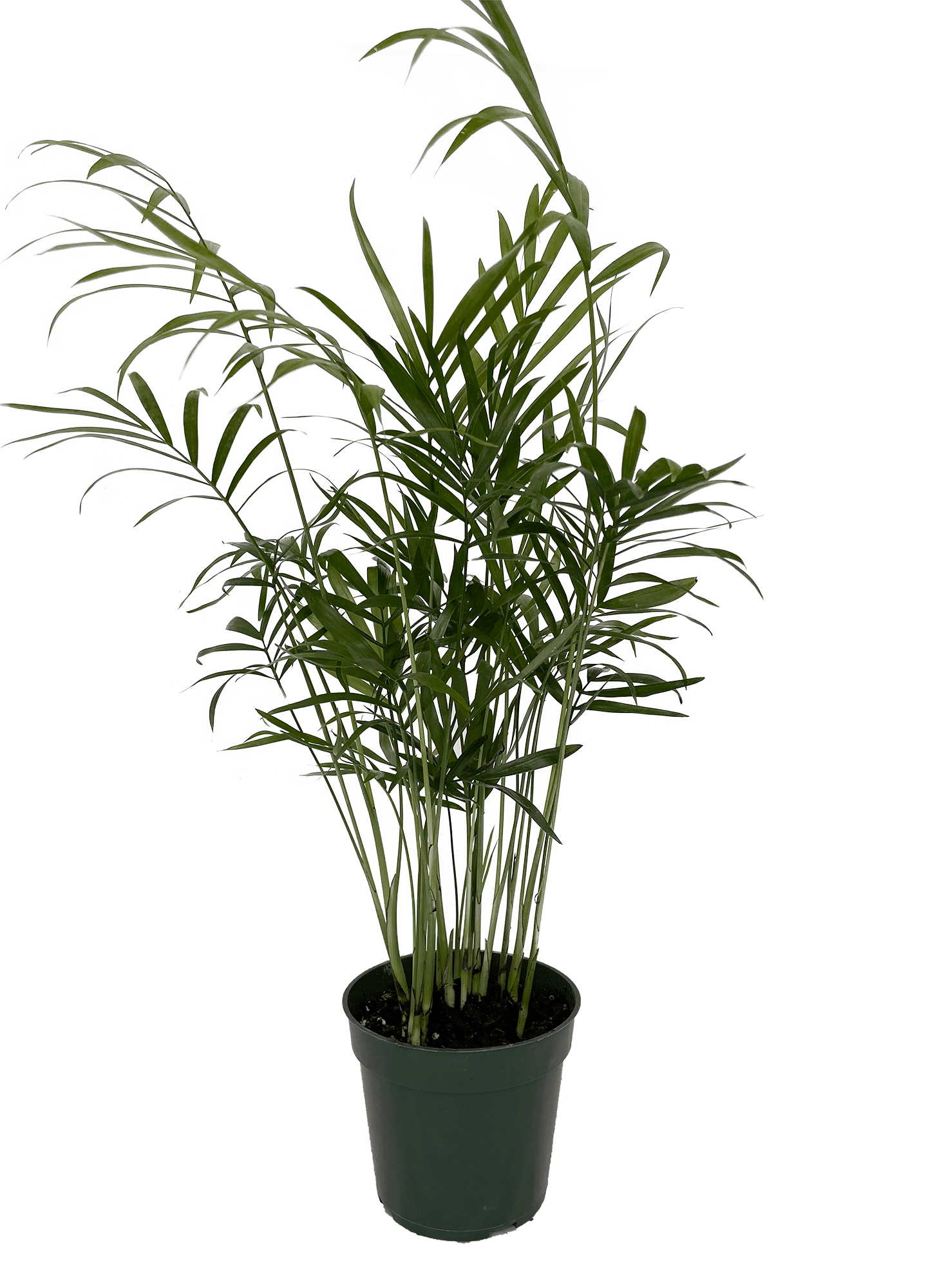
The classic Parlor Palm is a beloved indoor tree that has been treasured for centuries as a beautiful decoration for the home. With its slender, fan-like leaves and lush greenery, the Parlor Palm can grow up to 12 feet tall, adding a refined and stylish presence to any room.
It can tolerate low light conditions and can be an excellent choice for darker corners where other plants may struggle.
Parlor Palm Varieties
Parlor Palms come in a delightful array of varieties, each with its own unique charm and beauty. Some popular types include Chamaedorea elegans, C. erumpens, and Neanthe Bella Palm, all offering a touch of elegance to your home. These lovely plants are known for their adaptability, thriving in a range of lighting conditions from low light to bright indirect light.
Whether you’re looking to create an indoor tropical paradise or simply wish to add a touch of elegance to your living space, the Parlor Palm is an excellent choice. Its lush green fronds and graceful structure make it a popular indoor tree that can complement any interior design style. Not only is it visually appealing, but it’s also a low-maintenance plant that can adapt to a variety of lighting conditions.
Caring for Your Parlor Palm
Caring for your Parlor Palm is a breeze. These beautiful plants thrive in bright, indirect light and require regular watering to maintain their health. Be sure to keep the soil moist but not soggy, allowing it to dry out slightly between waterings.
The Parlor Palm doesn’t require much fertilization, but you can opt to feed it with a liquid houseplant fertilizer diluted to half-strength once a month for an abundance of growth.
With proper care, your Parlor Palm will flourish and become a stunning centerpiece in your home.
Troubleshooting Parlor Palm Issues
Although Parlor Palms are generally hardy and resilient, it’s important to be aware of potential issues that may arise. Common problems include browning leaves, yellowing leaves, and root rot. To ensure healthy growth, make sure to check the soil moisture, adjust the amount of light, and check for pests.
By taking these steps, you can help your Parlor Palm remain healthy and vibrant, making it a stunning addition to your indoor space.
8. Money Tree: A Lucky Charm
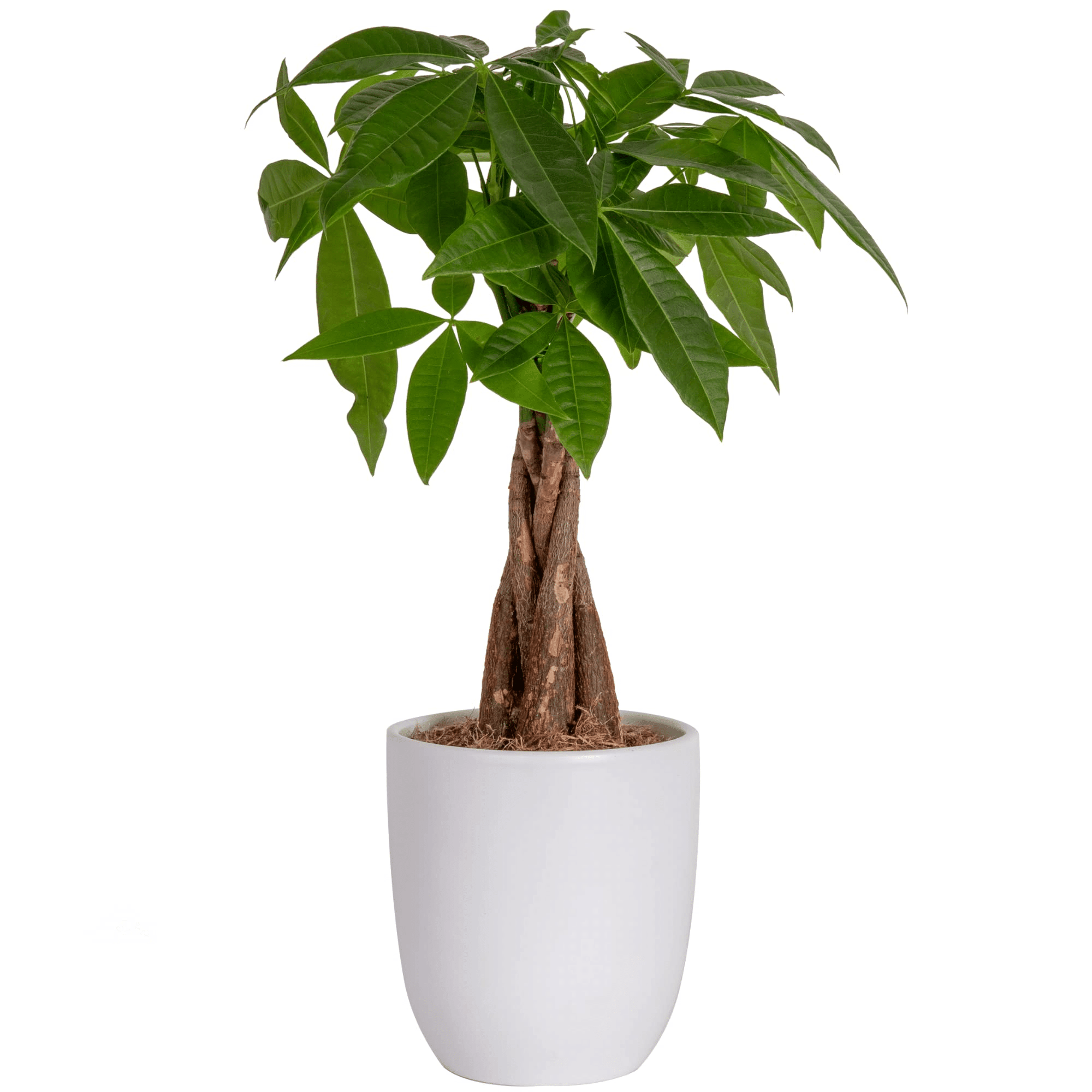
Bring good fortune and prosperity into your home with the Money Tree, an indoor tree believed to attract abundance and luck. With its distinctive trunk and vibrant green leaves, the Money Tree can grow up to an impressive 10 feet tall, making it a perfect addition to any room.
This low maintenance plant is perfect for those looking to introduce a touch of luck and prosperity into their living space.
Types of Money Trees
Money. Trees come in a variety of enchanting varieties, each with its own unique charm and beauty. Some of the impressive types include Pilea Peperomioides, Crassula ovata, Epipremnum Aureum, Pachira Aquatica, Lunaria, and Monstera Deliciosa. Each variety offers its own distinct charm and beauty, ensuring that there’s a Money Tree to suit every taste and style.
From the round, coin-shaped leaves of the Pilea Peperomioides to the thick, fleshy leaves of the Crassula ovata, Money Trees are known for their unique appearances and ability to thrive in low light conditions. Whether you’re looking to attract wealth and prosperity or simply wish to add a touch of luck to your living space, there’s a Money Tree variety that’s perfect for you.
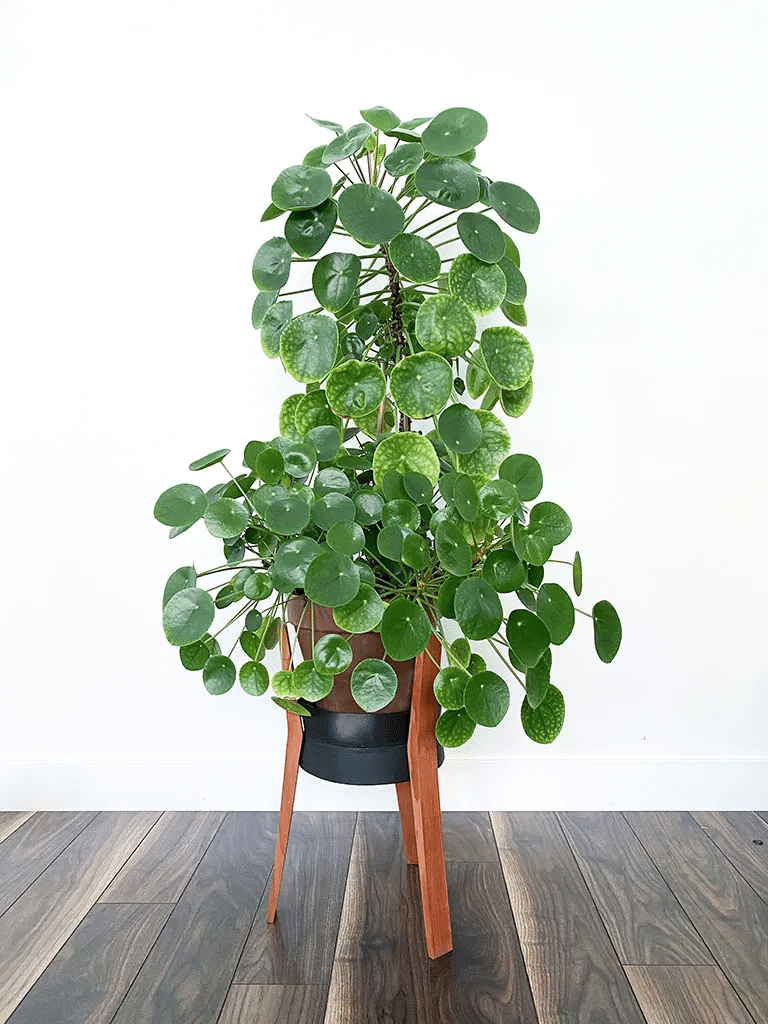
Money Tree Care Tips
Caring for your Money. Tree is relatively simple, as it requires minimal maintenance. These plants should be situated in an environment full of bright, indirect light. The soil should also be watered once the top inch has dried up. Fertilize your Money Tree every two weeks during the growing season with a regular houseplant fertilizer diluted to half-strength for a healthy and thriving plant.
By providing your Money Tree with the proper care, it will reward you with its stunning, prosperous presence.
Summary
In conclusion, adding low light indoor trees to your home is a fantastic way to bring the beauty of the outdoors inside. With their diverse shapes, sizes, and varieties, these plants can effortlessly transform any space into a lush, indoor oasis.
From the versatile Rubber Plant to the elegant Lady Palm, the striking Corn Plant to the unique Umbrella Tree, the tropical Kentia Palm to the bold Dragon Tree, the classic Parlor Palm to the lucky Money Tree, there’s a perfect low light indoor tree for every home.
So, why wait? Start your indoor tree collection today and let nature’s beauty inspire and uplift your living space!
Frequently Asked Questions
What trees can grow in low light?
Even though growing trees in low light conditions can be difficult, it isn’t impossible. There are plenty of trees that can thrive in a low light environment, including maples, dogwoods, magnolias, rhododendrons, holly trees, and more.
With a bit of patience and care, you can create a stunning shady landscape that will last for years to come.
What is the easiest indoor tree to maintain?
The jade tree is the perfect choice for anyone wanting a low maintenance indoor tree. This plant’s succulent leaves and trunk give it an attractive look while being very easy to care for, making it great for both beginners and more experienced houseplant growers.
Jade trees also make wonderful bonsai specimens.
How do I choose the best low light indoor tree for my home?
When selecting the best low light indoor tree for your home, pick one that suits your unique aesthetic and is low maintenance with respect to care and space.
When deciding on the best low light indoor tree for your home, opt for a species that will fit comfortably in the area you have available, has a style that speaks to you, and doesn’t require a lot of work when it comes to upkeep.
Can these indoor trees be grown in rooms without direct sunlight?
Yes, it is definitely possible to grow these indoor trees in rooms without direct sunlight. With careful placement and proper watering, you can easily find a place for them to flourish in any environment.
Indoor trees are a great way to bring a bit of nature into your home. They can be a great addition to any room, providing a touch of greenery.
How often should I water my indoor tree?
You should water your indoor tree when the top inch of soil is dry, adjusting as needed depending on the tree variety. With a bit of attention to detail, you’ll soon be a pro at keeping your indoor tree healthy and thriving!

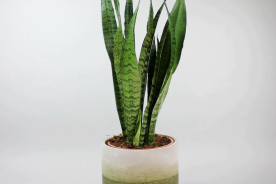
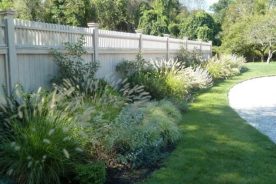
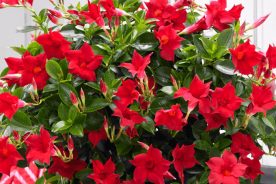

No Comments